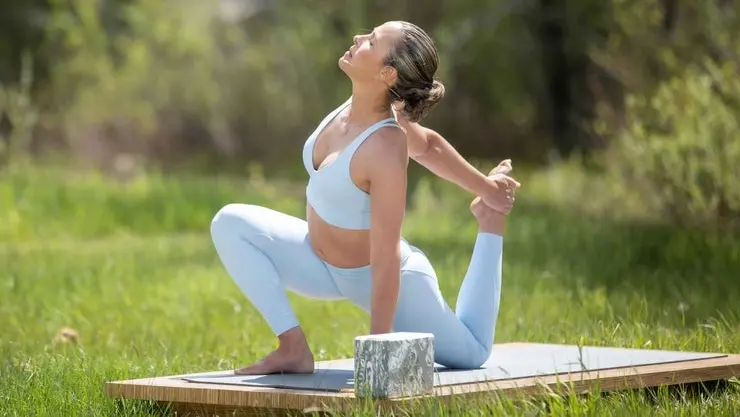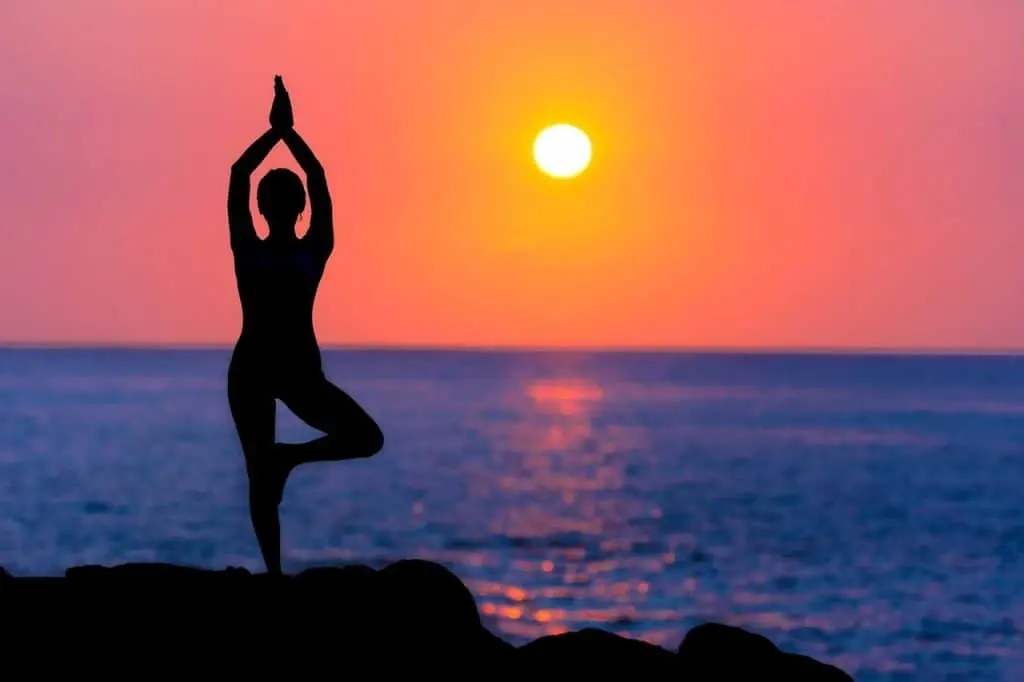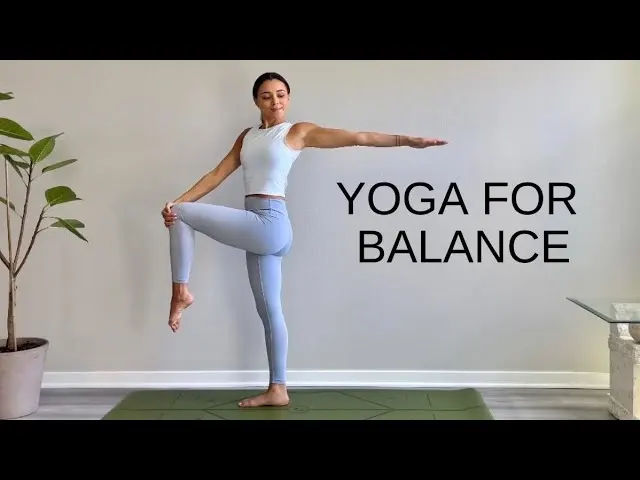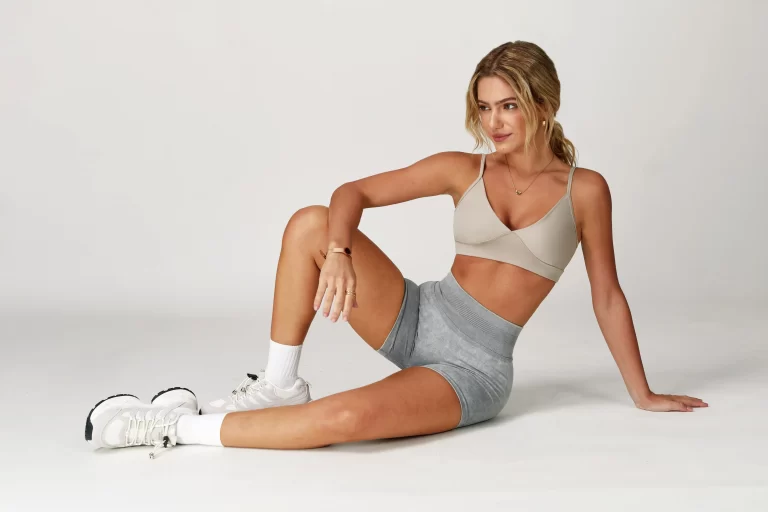Call Us At +86 17381572955
Yoga is an Art of Balance: Mastering Yoga Practice for Mind-Body Harmony
Discover the Art of Balance Through Yoga
When practicing yoga, do not be fixated on the difficulty of the poses, but rather focus on the connection between the poses and your body. Emphasize the combination of strength and flexibility, relaxation and concentration. Benefits of yoga for the human body.

The Importance of Continuous Practice
Yoga requires continuous practice. Even a little practice is better than none. But remember, it’s not about how much or how little you practice, but whether you practice correctly.
Yoga poses should be as stable as a mountain and as flexible as water. Stability for the body, flexibility for the heart. Without water, mountains lack greenery; without mountains, water has no flow. A rigid body without the heart is lifeless; a heart without the body is empty.
Philosophical Insights
Confucius discovered the great way and named it “the Middle Way”; Laozi called it “Wu Wei”; Zhuangzi called it “Carefree Wandering”; Krishna called it “Yoga”. So a yogi, in action, should be moderate; in thoughts, should be effortless; in soul, should be carefree.
Scientific Skepticism
Mr. Nan Huaijin once said, modern people who overly believe in science are more terrifying than those who are superstitious about religion. Because science itself has no final conclusions; new inventions and discoveries constantly overthrow the old, and it is endless, which is the spirit of science.
Nowadays, this situation also exists in the yoga world. Some people, under the guise of so-called science, act arrogantly and exclude others, lacking true scientific and yogic spirit.
The Beauty of Yoga Poses
The beauty of yoga poses: standing poses are magical; backbends are wonderful; forward bends are elegant; twists are joyful; inversions are relaxing. There are about 8400 yoga poses, but mastering just eight is sufficient.
In “Tea Classics,” it is said: “Tea is good for regular consumption but not in excess.” From a health perspective, drinking tea three times a day is best; more can harm the body. The same principle applies to yoga: suitable for long-term practice but not excessive daily practice.
Start Your Day with Morning Practice
Start your morning practice at sunrise, charging for the new day. If you practice well in the morning, you won’t need to practice yoga at other times. If you feel it’s not enough, it means your morning practice is insufficient and unfocused.
True yoga practice is of the heart, a heart that is at peace. Just as Indian philosophy teaches in four sentences: Whoever you meet is the right person; whatever happens is the only thing that could happen; whatever time it starts is the right time; and when it’s over, it’s over.

Follow Your Instincts in Yoga Poses
Yoga poses should follow our instincts: less performance, more authenticity; less imitation, more nature; less seriousness, more earnestness; less entanglement, more calm; less sorrow, more grace. Our life is also like this.
Principles from Martial Arts and Dance
In martial arts, to punch out, you must first retract your fist; in dance, to jump high, you must squat well, to turn fast, you must stand well; in yoga, to stretch, you must first contract.
During yoga practice, if you are entangled, it’s because you lack wisdom; if you are depressed, it’s because you lack openness; if you are anxious, it’s because you lack calm; if you are regressing, it’s because you lack diligence; if you are jealous, it’s because you lack excellence… Every trouble’s root lies within yourself. Thus, every time a trouble appears, it’s an opportunity to find your own shortcomings.
Handling Challenges in Yoga Practice
If there is a shadow in front of you, there must be sunshine behind you; if your yoga practice is encountering a bottleneck, there must be limitless space for your future yoga practice.
Practicing yoga poses is important, but more important is maintaining the correct posture in daily life. A pose is a momentary posture; posture is a solidified pose. Keeping the state of yoga in sitting, lying, walking is the most important.

Exploring Various Schools of Yoga
Yoga has many practice methods, forming various schools. There is no superiority among different schools, just like various trees in a forest, all aiming to grow towards the light.
Different practice methods of various schools open our wisdom and potential, bringing us joy and peace.
Art vs. Technique in Yoga
Mr. Fu Lei said: “Now I firmly believe this is a kind of obsession. Those who constantly pursue techniques are craftsmen, not artists. Art is the goal, technique is the means. Those who always focus on means will inevitably forget the goal.”
Is there such an “obsession” on the path of yoga practice? When we repeatedly get entangled in yoga poses, have we forgotten the initial purpose of yoga—serenity.
Each yoga school has its characteristics and strengths. It’s hard to truly combine Iyengar and Ashtanga, just like it’s hard to combine traditional Chinese medicine and Western medicine, Chinese painting and oil painting, Confucianism and Catholicism. Traditional Chinese medicine is holistic, Western medicine is local; Chinese painting focuses on artistic conception, oil painting on realism; Confucianism focuses on human relations, Catholicism on God; Iyengar focuses on precision, Ashtanga on flow.
Avoiding Extremes in Yoga Practice
In the domestic yoga circle, there are often extreme people and those who like to be serious. I always wonder why practicing yoga makes people like this? Later, I realized the concept of the “edge of limits” in yoga is harmful. The concept of the “edge of limits” makes people obsessive. Artists always push themselves to the edge, and the edge is the limit. Most artists are obsessive. Yoga practitioners should not be obsessive!
Philosophical Insights in Simple Actions
British novelist Somerset Maugham said: “Shaving every moment is a philosophy.” The seemingly mechanical action of 108 sun salutations is also full of philosophy. No matter how insignificant the action, if practiced daily, some philosophical ideas will emerge. Any mundane life, if seen with discerning eyes, can turn ordinary into extraordinary, decay into magic, growing the flower of wisdom.
Yoga as an Art of Balance
Yoga is an art of balance, a path of moderation, a grasp of degree. Don’t be too competitive to become utilitarian, nor too content to become stagnant. As the saying goes: don’t have a utilitarian heart, but also don’t lack an enterprising heart. Learning yoga is like learning a foreign language. Single poses are words, a series of actions are phrases, a sequence is a sentence. Learning a language is not just memorizing words without learning phrases and sentences; practicing yoga is not just practicing single poses without learning combinations and sequences. In Yin yoga, as time goes by, there will be some pain. We should face pain, accept it, deal with it, and let it go. Physical pain is like life’s suffering, eventually turning into nourishment.
Foundation of Yoga Practice
In yoga, poses are the basis of meditation. In poses, standing is the basis of sitting, sitting is the basis of forward bending, forward bending is the basis of twisting, twisting is the basis of back bending, back bending is the basis of inversions. In meditation, concentration (Dharana) is the basis of meditation (Dhyana), meditation is the basis of Samadhi.
Process Over Perfection
You don’t need to figure out everything about a yoga pose before doing it. Aim for perfection, but your actions don’t need to be flawless. Like Pandora’s box, every answer contains more questions. The process is always more important than the goal. Of course, the goal cannot be absent, but the real goal is the continuous improvement of oneself. The perfection of poses can only be sought in practice.
Books as Zen Rooms
Every wise book is like a Zen room. You can walk in, sit quietly, and understand your own truths and answers.
When practicing yoga, learn to release yourself. The 46th verse of the second chapter of the Yoga Sutras says: “When all efforts are relaxed, and the mind is absorbed in the Infinite, then the posture is mastered.”
Types of Yoga Practitioners
Yoga practitioners can be simply divided into four types: confused, smart, wise, and enlightened. Those who practice painfully and obsessively are confused; those who practice comfortably and happily are smart; those who make others practice comfortably and happily are wise; those who make both themselves and others practice comfortably and happily are enlightened.
Path of Yoga Practice
On the path of yoga practice, do not neglect your body, do not burden your soul, do not disguise your spirit. Keep your steps light, let joy always be with you. Simplicity is the base color of our life, tranquility is the power of our life, freedom is our life’s longing, and happiness is our life’s pursuit.
Yoga has been developing in China for over twenty years, a miracle compared to the promotion of Tai Chi and other Chinese health practices. Yoga is not just about poses, but also culture, thought, and spirit. Without culture behind yoga, without thought behind culture, without spirit behind thought, this miracle will eventually disappear. Yoga poses, please slow down, wait for your stiff body, wait for your hurried breath, wait for your dusty soul. When language is pale, silence speaks; when the body is still, breath is in yoga; when breath stops, the soul is in heaven.
Yoga’s Ultimate Goal
The main intention of yoga is to make people wiser, with more understanding of things than before.
There is such a person, who wakes up at 4 a.m. every day and finishes the previous day’s work by 9:30 a.m. He said: “Where does freedom come from? From self-confidence. Self-confidence comes from self-discipline. Self-discipline is strictly controlling your time.” This person is Steve Jobs!
Self-Discipline and Freedom
The ultimate goal of yoga is also freedom. Freedom comes from self-confidence, self-confidence comes from self-discipline, self-discipline comes from daily self-practice, and self-practice comes from waking up early every day.
Before his nirvana, Shakyamuni Buddha left his disciples with this sentence: “Be a lamp unto yourself, be a refuge unto yourself.” It means you are your own guiding light, and you are your own refuge. Later, there is also a saying: “Bodhi is found within the mind, not to be sought externally.” On the path of yoga practice, the body is our best teacher. Listen carefully to the voice of your body.
Reflecting on Yoga Practice
After practicing yoga for a while, reflect on: Are you more earnest, not more serious; are you more focused, not more scattered; are you stronger, not weaker; are you more flexible, not just softer; do you like interacting with people more, not more aloof; do you love life more, not more detached from worldly affairs.
With continuous yoga practice, you will gradually become clearer, see the yoga world more clearly, see through the real behind all disguises, see through the false hidden in each school. Many things that were once vague become clear, and things you once believed are no longer believed. But believe, the beauty in the yoga world always outweighs the darkness, sincerity outweighs falsehood. There are many things in yoga that are worth your consistent belief.
Yoga as a Journey
Eggs, broken from outside, are food; broken from inside, are life. Life, broken from outside, is pressure; broken from inside, is growth. Body temperature, heated from outside, is consumption; heated from inside, is energy. Yoga, practiced externally, is exercise; practiced internally, is cultivation.
The furthest journey in the world is from one’s body to one’s heart. From practicing yoga poses to cultivating the yoga heart can take years or even decades. The furthest journey in the world is from one’s heart to another’s heart. Loving someone requires a lifetime or even beyond. Just as love requires not perfection but true feeling, yoga poses also require not perfection but true feeling.
Final Thoughts
Don’t be serious with poses. Being serious easily shakes our mindset and changes our initial intention for yoga. The result of being serious makes one either inferior or arrogant, ultimately becoming mediocre.
Not confused by schools, not bound by poses; not fearing the future, not regretting the past; not disturbed in the heart, be at peace in the present. This is yoga.
Every profession has skills, and skills and art are inseparable. Now many yoga practitioners separate skills and art, making yoga purely muscle exercises. Yoga is not just about posing but also expressing the soul.
Like a key is not an answer, just a method, yoga poses are also not the answer but a gateway to meditation.
Hold an ordinary heart, not tempted by vanity, not confused by schools, not moved by externals, not obsessed with poses.



